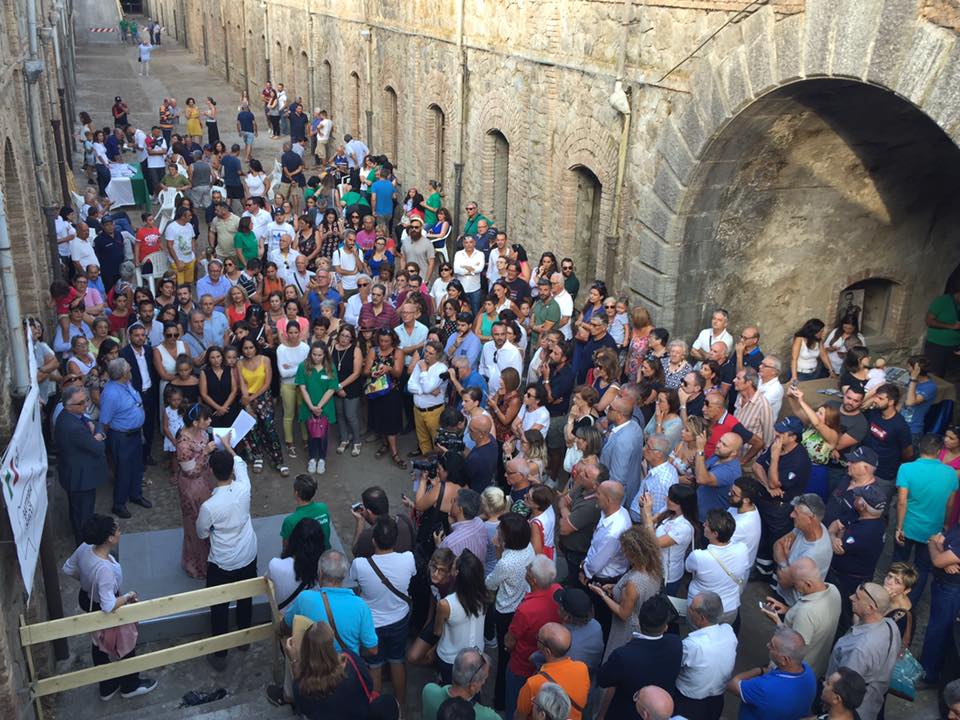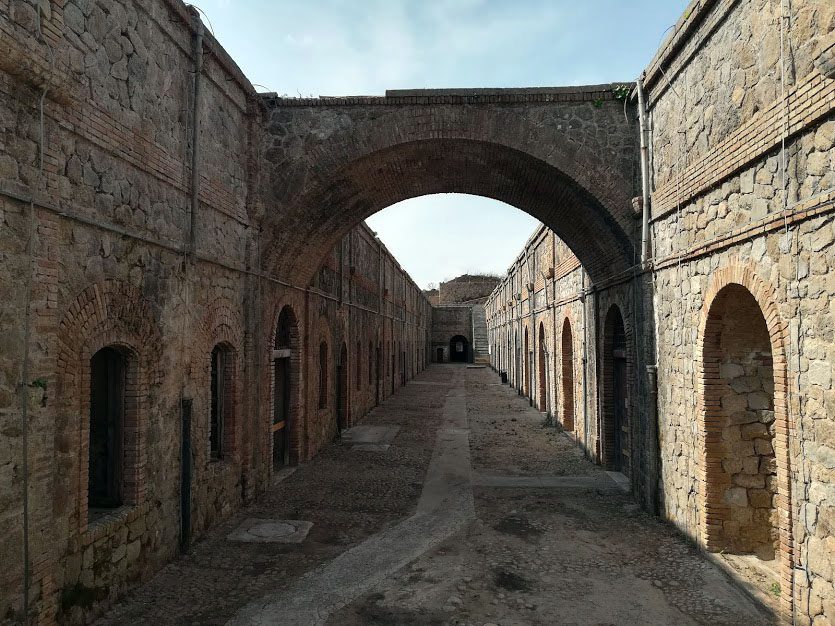At the end of the 19th century, the newly established Kingdom of Italy looked to secure its borders, with a focus on its maritime defences through the construction of a system of fortified structures.
Within the area of the Strait of Messina in southern Italy, a permanent system of coastal batteries was built by the Military Engineering Corps and completed in 1890. This included 21 fortresses – 13 in the Sicilian coast and 8 in the Calabrian coast, all of which were strategically positioned at different altitudes above sea level.
Technically speaking, the fortified complexes are embankment buildings with a polygonal plan, designed with a limited vertical extension in order to prevent being targeted by attacking naval fleets. Ballistic studies were used to define their dimensions as well as their position in the landscape, which meant a greater degree of security and an elevated position to fire from.
It is clear that the working principle of these structures was to be well hidden, and at the same time to control the surrounding sea. However, technological advances such as the invention of the airplane made these buildings virtually obsolete from the outset.
Subsequently, these fortifications were neither used during the Great War or during the outbreak of the Second World War. They did, however, serve as military bases for exercises and as ammunition depots before being decommissioned. This, along with military restrictions imposed by the Italian Ministry of Defence made most of the sites inaccessible, resulting in their neglect and poor state of preservation.
One example of this is the Siacci fort, which is among the most important of the Calabrian fortified structures along with two smaller fortifications of the same period in Matiniti, part of the Municipality of Campo Calabro. The fort was decommissioned in 1984, and has since become an inaccessible ruin that the Campo Calabro community has petitioned to manage.
The community has strong emotional ties to the fort, with some of the older generation having worked there and passing on oral accounts of life within Siacci to their descendants. This emotional link was further demonstrated during the preliminary restoration and reopening of the fort, when the community volunteered their time to help preserve the monument and surrounding area.

The official opening was inaugurated in August 2019, with the fort becoming a tourist attraction and hosting cultural events. Campo Calabro is a small community and has never seen real economic progress even with the development of an industrial centre, resulting in some members of the community migrating for job opportunities elsewhere.
In this complex social scenario, the re-opening of the fort instigated the discussion of a wide strategic enhancement plan that would help develop this community in terms of culture, economy, job opportunities and, obviously, tourism.
A plan has been devised to regenerate the area, with the creation of a targeted multidisciplinary approach aimed at the preservation of coastal batteries scattered through both the Calabrian and the Sicilian coasts.
This will bring together multiple communities and stakeholders to cooperate to sustainably develop the Strait of Messina and demonstrate that cultural heritage can contribute to a social growth of small communities.
Written by Barbara Morda
Dr Barbara Mordà is an Italian archaeologist, currently vice president of Centro Studi MEDFORT, a non-profit organisation in Italy that aims to preserve and enhance military heritage in the Mediterranean.





